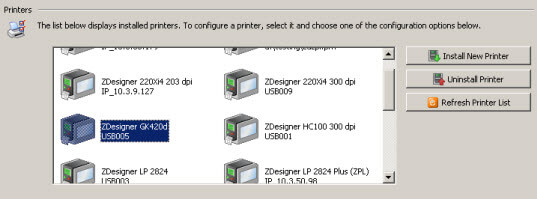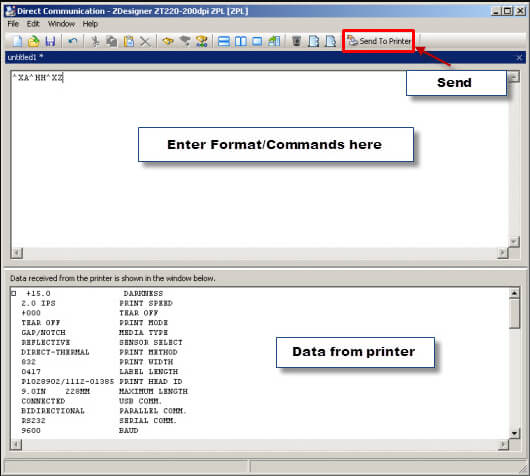This article demonstrates how to install Zebra Setup Utilities and send commands to printers.Issue / QuestionHow to use ZSU to send printer commands directly to the printer’s port and receive data back to the host? How to check printer parameters or test communications?Applicable ToZebra Printers using a PC with Windows OS Excludes: ZQ110, EM220, EM220IIResolution / Answer
Requirements:
- Printer communications from a Windows Host.
- Zebra Setup Utilities installed on your Windows PC.
- Printer Programming Command details are supported by your printer.
- Programming Guide for ZPL
- Programming Guide for EPL
- CPCL for LinkOS Printers Programming Manual
Before installation, be sure that your printer is still supported. Here is the list of discontinued printers. The Zebra Setup Utilities do not support card printers.
e-Label
Zebra Setup Utilities Overview:
The Communications Window of theZebra Setup Utilities (ZSU) can send printer commands directly to the printer’s port and receive data back to the host. The ZSU will use the selected port in the ZDesigner Driver for the given printer.
IMPORTANT! If manually entering Set Get Do commands (SGD), the syntax must be exact, or the command will be ignored. Refer to this article for more information about the SGD Printer Commands.
Procedure:
- 1. Download and install the Zebra Setup Utilities.
- 2. To use the Communications Window, open ZSU and select your printer:

- 3. If you select a printer with a TCP/IP Port and receive the following error, install the Zebra Designer Port Monitor. Refer to Zebra Setup Utilities: Installing the ZebraDesigner Port Monitor for more information.

- 4. Select Open Communication with Printer:

You should see the Direct Communications window, where you can enter the desired commands, create simple label formats using the printer command language, or host requests. After entering the data, select Send to Printer. The printer should respond to the commands and either print your request or, if sending a host response command, you will view the data in the lower window.
In this example, we send a configuration request using the ZPL command ^HH. For more information about the command, refer to this Programming Guide.

If you have written data you wish to make available for testing or other purposes, you can save these as files for reuse. Select File > Save As.


